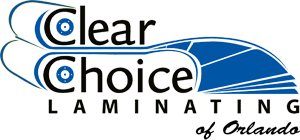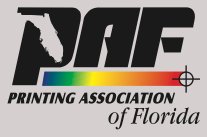Guidelines
The size of the printed item to be mounted cannot be the final size of the mounted job when Glue Mounting. Print must have a minimum of a 1/8″ border. Non Glue Mounts can be done final size.
Single Sided Lamination: Requires a minimum 1/2 inch guide and gripper margins on all sides
Small Flush Trimmed Items: (business cards, bookmarks, etc.) These should be run multiple up on a master sheet, this is the least expensive way. Cards requiring a sealed edge should be delivered cut to size.
Crop Marks: Are preferred to help minimize errors when cutting down from a larger sheet.
Cornering: Highly recommended when using 10 mil film, the corners are sharp and may cause injury.
Thin Paper: Copies (20 to 60#) produced by high speed copiers can get wavy when laminated, this can be minimized by using heavier weight papers.
For the best lamination and quickest results please provide us with a contact person, phone number and extension, and a sample that includes production method (e.g. copier, offset, digital, etc.), finish size, trim instructions, scoring positions, corner radius, drill hole size, eyelet location, guide and gripper edges and any other special instructions.
Please include a reasonable number of make readies or over’s to meet your count
Inks: (Containing wax or silicone), UV Coatings, Toners, Fuser Oil, and Aqueous Coatings can all interfere with the bonding properties between the plastic laminate and your document. These coatings prevent the film laminate from adhering properly to the base paper
Solutions:
Aqueous Coatings – Inform your aqueous provider of your intent to film laminate so that they can apply the proper primer to minimize bonding issues
Fuser Oil – (used in hi-speed digital color copiers – Canon, Docutech, and others) produce documents that must dry a minimum of 24 hours. This allows time for the fuser oil to evaporate. Documents with heavy coverage may require a longer drying time. Using Super Stick Film, and a sealed edge or a clean/white paper border will also improve the quality of the bonding.
Digital Prints – Use inks that are often heat sensitive, they could boil, and/or change color. It is highly recommended that cold or low melt laminating film be used for best results.
Offset Printing – Bonds well with all film types.
Terminology
Flush Cut:
Where the film is trimmed to the edge of the paper
Edge Seal:
When the paper is encapsulated to a certain size 1/8,1/1…
Cut:
The number of tabs in a bank, expressed in the form of a fraction.
Examples:
5 tabs to a bank = 1/5 cut.
7 tabs to a bank = 1/7 cut.
Bank:
Refers to a single row of tabs. The number of tabs in a bank can be limited by the length of the tabs and the sheet size.
Tab:
The actual index tab that resides in a bank.
Sets:
The amount of tabs needed for each tab in a bank.
Mylar:
A tough polyester film which is applied over tabs to provide protection and color.
Plain Tabs:
A tab that is cut without any Mylar being applied
Polyester:
An outstanding film that’s ideal for most any application. It is an extremely durable product that features excellent scuff and scratch resistance. PET is the industry’s most popular film. designed for two sided lamination of printed materials with or without edge seal.
Polypropylene, aka OPP:
OPP offers a beautiful finish, gives the “wet look.” Very cost-effective, clear and shiny. Ideal for presentation folders, book covers, etc. Excellent folding characteristics. designed for one or tow sided lamination of printed materials. It is an especially glossy film with excellent folding characteristics. It is a beautiful and cost-effective alternative to PET.
Nylon
This is the choice for most book manufacturers due to its curl-free capabilities. It is a durable product with excellent scuff- and scratch-resistance.
Super Stick Disclaimer

